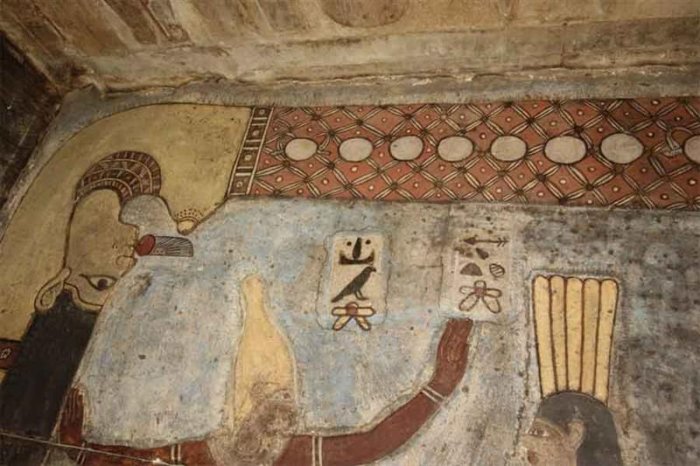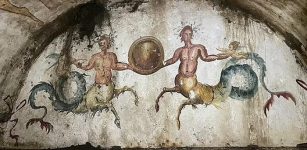Reliefs And Engravings Of Celestial Bodies And A Zodiac On Walls And Ceilings Of Luxor’s Esna Temple
Conny Waters - AncientPages.com - During the ongoing restoration works of Esna Temple in Luxor , the Egyptian-German archaeologists additionally uncovered more original reliefs and engravings on the walls and the ceilings of the structure.
Image credit: Ahram Online
The depictions show astro-theological scenes, including gods and goddesses that represent celestial bodies and a zodiac.
The mission uncovered a scene depicting the goddess Sothis at the start of the Nile flooding and another scene showing the sun god Khnum-Re depicted with four ram heads.
Christian Leitz, the head of the mission from the German side, explained that the main subject of this relief is Orion and Sothis., The stars composing the modern constellation of Orion, whose brightest star is Rigel, are associated with the god Osiris
Sothis is the Greek name of the ancient Egyptian goddess Sepdet, representing the goddess Isis, the sister of Osiris. She is associated with the star Sirius, the brightest star in the sky whose reappearance after 70 days of invisibility anticipates the flooding of the Nile in mid-July.
“This also marks New Year’s Day in the ancient Egyptian calendar,” said Leitz as cited by Ahram Online.
“During the conservation works a lot of new ink inscriptions came to light which were previously unseen due to the thick layer of soot [, dirt, and grime of the past 2,000 years],” Hisham El-Leithy, the head of the mission from the Egyptian side asserted.
See also:
Original Colors Of 2,000-Year-Old Inscriptions At Temple Of Esna, Luxor – Revealed
New Archaeological Discoveries In The Temple Of Khnum At Esna, Luxor
Visitors to the temple will now be able to admire the new scenes.
He pointed out that among them is a zodiac relief found on the ceiling of the temple’s columned hall. It contains all the twelve Zodiac signs, the outer planets of Jupiter, Saturn, and Mars, as well as depictions of the so-called seven arrows and constellations used by the ancient Egyptians to measure time.
On top of the entrance to the temple is a relief showing 46 eagles standing in two rows, with some bearing the heads of the Upper Egypt goddess Nekhbet, and others bearing the head of the Lower Egypt goddess Wadget.
“It is the first time to find these reliefs,” said Mostafa Waziri, secretary general of the Supreme Council of Antiquities.
He added that they were not seen or mentioned in the works published by the French Egyptologist Serge Soniron, who documented the temple’s reliefs in 1963 and 1975.
“This discovery made it important for Egyptologists to begin a restoration project, funded by the American Research Centre in Cairo and the Ancient Egypt Foundation, to protect the temple and uncover its decorations,” El-Leithy pointed out.
The engravings will be examined further to reveal more details regarding the discovered art in the Esna Temple..
Construction on the Temple of Esna, which is dedicated to the ram god Khnum-Re and his divine consorts, began in the Roman era during the reign of Emperor Claudius (41-54 AD) and was completed during the reign of Emperor Decius (249-251 AD).
During the 19th and 20th centuries, the Temple of Esna suffered from urban encroachment, which limited access to the site through one of the houses built around it.
During the reign of Mohamed Ali Pasha (1805-1840 AD), the temple is reported to have been used as a storage facility for the cotton crop.
Written by Conny Waters - AncientPages.com Staff Writer























